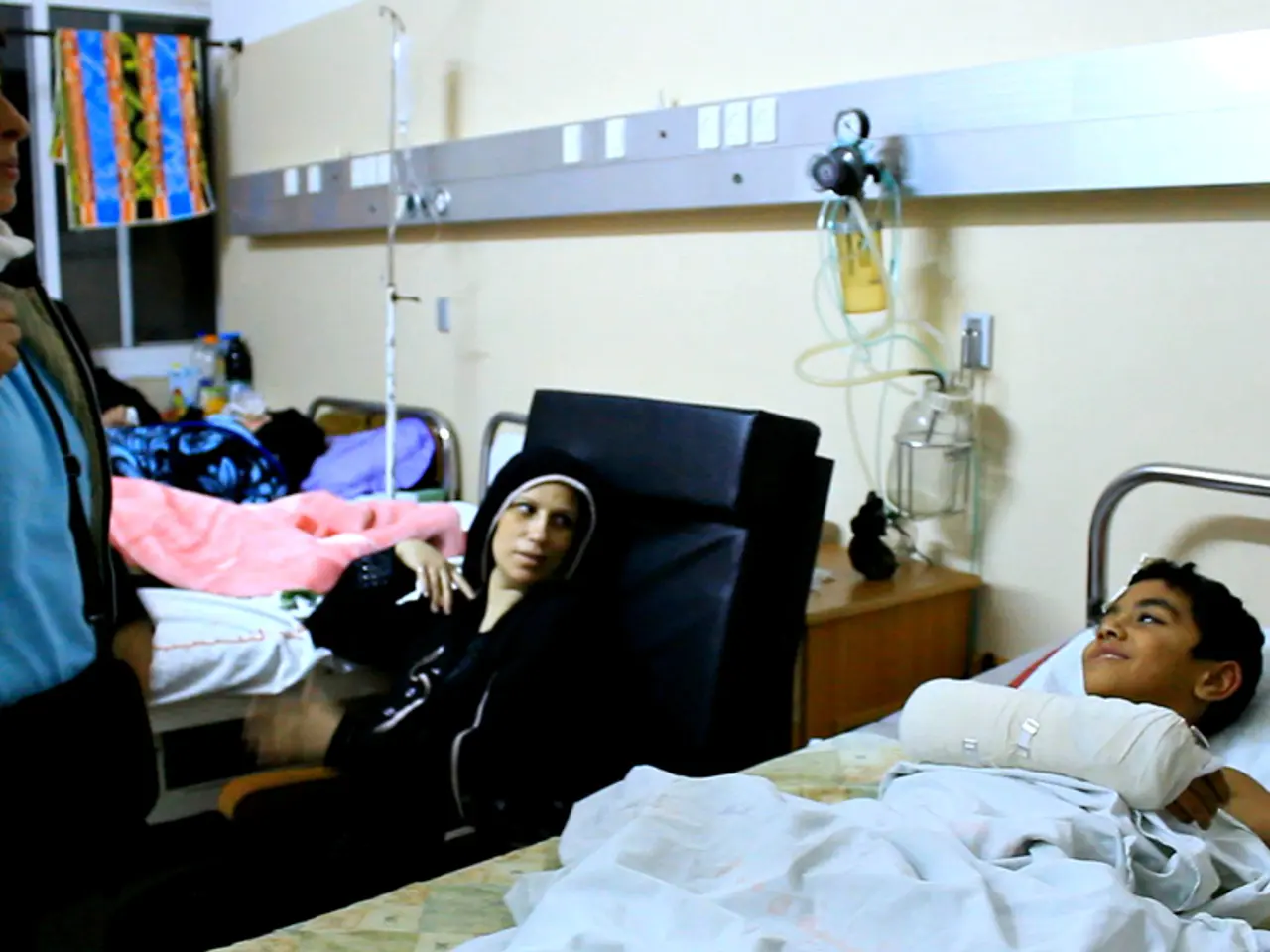Customized vascular designs for optimal catheter choice: Illustrated in two aneurysm embolization scenarios
In the realm of neurointerventional medicine, patient-specific, flexible, hollow vascular models are revolutionizing complex aneurysm coil embolization procedures. These models, designed to replicate a patient's exact three-dimensional anatomy and mechanical properties, offer numerous benefits.
The models, coated with silicone and connected to a sheath in a white box, were used to simulate endovascular procedures without fluoroscopy. In a recent study, these models proved instrumental in procedures involving renal arteriovenous malformations and preoperative simulations. These simulations have been reported to improve embolization material selection and device access.
One such case involved a female patient in her 40s, who presented with a 5 × 5 mm saccular aneurysm at the origin of the dorsal pancreatic artery, branching from the SMA. Using a patient-specific vascular model, it was determined that using a 4.5-Fr guiding sheath and a 4-Fr Rösch hepatic catheter would provide sufficient backup support for accurate coil placement during the procedure.
The benefits of these models are manifold. Better catheter navigation is achieved by practicing catheterization within the patient-specific hollow model, helping select the most appropriate microcatheter and guidewire, reducing procedural challenges navigating tortuous anatomy or complex aneurysm geometries.
Simulation with flexible models also enables testing coil deployment strategies and device sizing before the real procedure. This can reduce the risk of coil prolapse or incomplete aneurysm occlusion.
Efficiency gains are another advantage. Preprocedural rehearsal shortens actual procedure time by eliminating guesswork and reducing fluoroscopy exposure, thereby lowering radiation and contrast agent usage.
These models are also valuable for training neurointerventionalists on complex cases, enhancing operator confidence and skill.
Methods used to create these models typically involve obtaining patient imaging data (e.g., CT or MR angiography), generating a 3D digital reconstruction of the vascular anatomy, and then fabricating the physical model using materials that mimic vessel compliance, often via 3D printing or molding techniques. The hollow design allows insertion of actual catheters and devices during simulation.
The use of these models has been shown to improve procedural outcomes by enabling personalized device and approach selection, decreasing technical failures, and increasing occlusion success rates. For instance, in robotic-assisted neuroendovascular procedures, these simulators are invaluable due to their emphasis on precise navigation in complex anatomies.
In summary, patient-specific, flexible, hollow vascular models serve as a critical bridge between imaging and intervention in complex aneurysm coiling procedures, improving catheter choice, reducing operative time, and enhancing procedural safety and efficacy.
References:
[1] Robotic-assisted neuroendovascular procedures: challenges and opportunities. Neurosurgery. 2018 Sep;83(3):515-528. doi: 10.1097/NEU.0000000000001752.
[2] Virtual reality simulation for neurointerventional procedures: current status and future directions. NeuroImage. 2018 Nov 1;175:121-131. doi: 10.1016/j.neuroimage.2018.07.005.
Interventional radiology has been revolutionized by the use of patient-specific, flexible, hollow vascular models, harnessing the power of science and technology. These models, often designed through data-and-cloud-computing-driven methods and fabricated via technology like 3D printing, are not just limited to health-and-wellness sectors, as they are also being explored in the realm of sports-analysis and fitness-and-exercise, offering promising opportunities for sports equipment and athlete training simulations. In the field of nutrition, data-driven personalized diets could potentially be tested on these models, simulating the effects of specific foods on the physiological 3D structure of a person's digestive system. Furthermore, the benefits of these models reach beyond medicine, as their efficient use in eliminating guesswork and reducing exposure to harmful elements aligns well with the sustainable principles of today's health-and-wellness culture.




